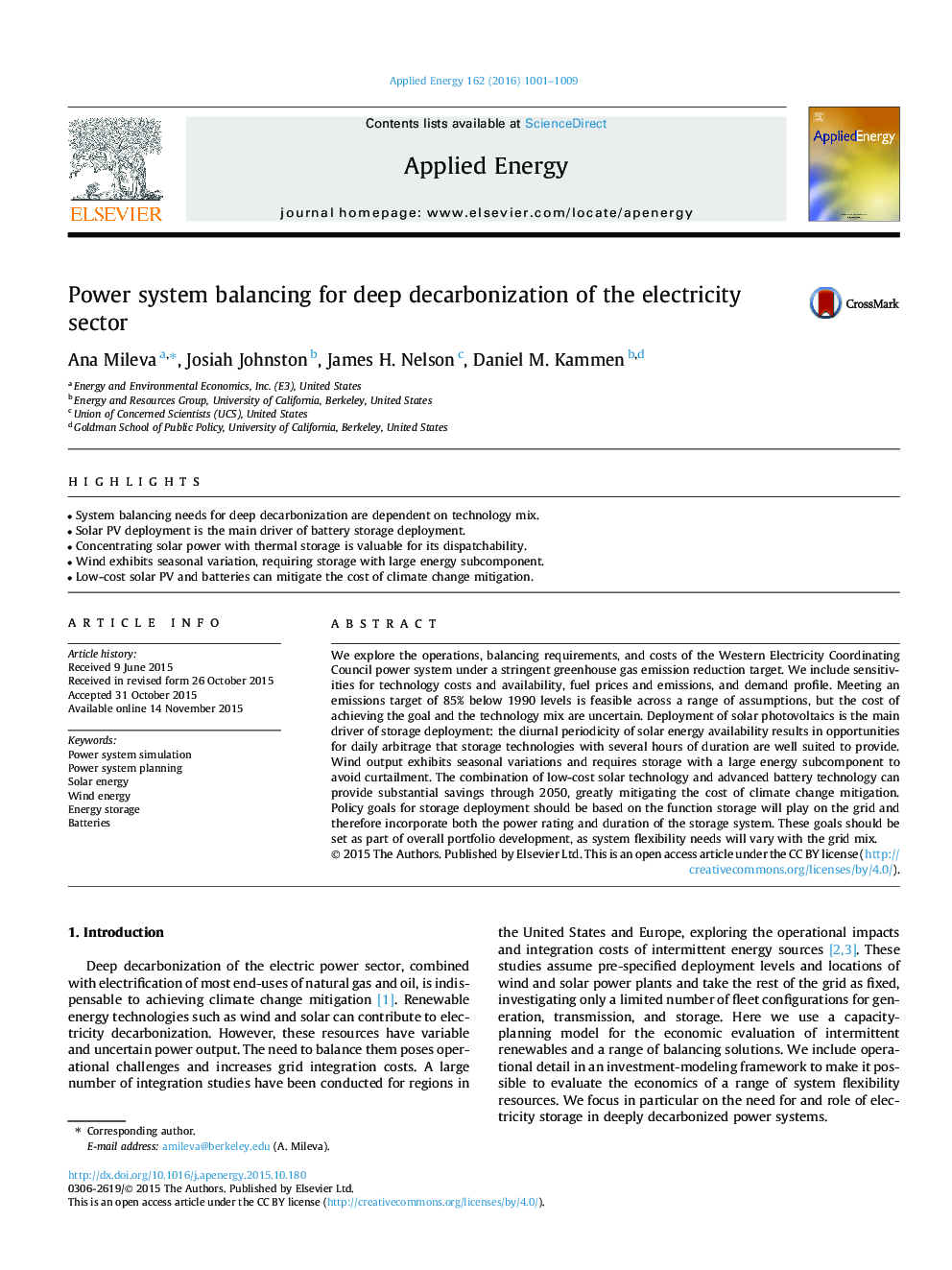| کد مقاله | کد نشریه | سال انتشار | مقاله انگلیسی | نسخه تمام متن |
|---|---|---|---|---|
| 6684879 | 501865 | 2016 | 9 صفحه PDF | دانلود رایگان |
عنوان انگلیسی مقاله ISI
Power system balancing for deep decarbonization of the electricity sector
ترجمه فارسی عنوان
سیستم قدرت متعادل کننده برای کربنیزاسیون عمیق بخش برق
دانلود مقاله + سفارش ترجمه
دانلود مقاله ISI انگلیسی
رایگان برای ایرانیان
کلمات کلیدی
شبیه سازی سیستم قدرت، برنامه ریزی نیروی برق، انرژی خورشیدی، انرژی باد، ذخیره انرژی، باتری،
ترجمه چکیده
ما عملیات، نیازهای متعادل سازی و هزینه های برق سیستم شورای هماهنگی برق غرب را تحت هدف کاهش شدید گازهای گلخانه ای دقیق بررسی می کنیم. ما شامل حساسیت به هزینه های فناوری و در دسترس بودن، قیمت سوخت و انتشار گازها و مشخصات تقاضا است. رسیدن به اهداف انتشاری 85 درصد کمتر از مقادیر 1990 در طیف وسیعی از مفروضات امکانپذیر است، اما هزینه دستیابی به هدف و ترکیب تکنولوژی، نامطمئن است. استقرار فتوولتائیک خورشیدی، راننده اصلی استقرار ذخیره سازی است: دوره زمانی روزانه انرژی انرژی خورشیدی منجر به فرصت هایی برای آربیتراژ روزانه می شود که فناوری های ذخیره سازی با چند ساعت زمان برای ارائه مناسب است. خروجی باد دارای تغییرات فصلی است و نیاز به ذخیره سازی با یک زیرمجموعه انرژی بزرگ برای جلوگیری از محدودیت دارد. ترکیبی از کم هزینه فن آوری خورشیدی و تکنولوژی باتری پیشرفته می تواند از سال 2050 صرفه جویی قابل توجهی داشته باشد، تا حد زیادی کاهش هزینه تغییرات آب و هوایی را کاهش دهد. اهداف سیاست برای انبار ذخیره سازی باید بر اساس ذخیره سازی تابع در شبکه بازی کند و از این رو هر دو امتیاز قدرت و مدت زمان ذخیره سازی را شامل می شود. این اهداف باید به عنوان بخشی از توسعه کلی نمونه کارها تعیین شود، زیرا نیازهای انعطاف پذیری سیستم با مخلوط شبکه متفاوت است.
موضوعات مرتبط
مهندسی و علوم پایه
مهندسی انرژی
مهندسی انرژی و فناوری های برق
چکیده انگلیسی
We explore the operations, balancing requirements, and costs of the Western Electricity Coordinating Council power system under a stringent greenhouse gas emission reduction target. We include sensitivities for technology costs and availability, fuel prices and emissions, and demand profile. Meeting an emissions target of 85% below 1990 levels is feasible across a range of assumptions, but the cost of achieving the goal and the technology mix are uncertain. Deployment of solar photovoltaics is the main driver of storage deployment: the diurnal periodicity of solar energy availability results in opportunities for daily arbitrage that storage technologies with several hours of duration are well suited to provide. Wind output exhibits seasonal variations and requires storage with a large energy subcomponent to avoid curtailment. The combination of low-cost solar technology and advanced battery technology can provide substantial savings through 2050, greatly mitigating the cost of climate change mitigation. Policy goals for storage deployment should be based on the function storage will play on the grid and therefore incorporate both the power rating and duration of the storage system. These goals should be set as part of overall portfolio development, as system flexibility needs will vary with the grid mix.
ناشر
Database: Elsevier - ScienceDirect (ساینس دایرکت)
Journal: Applied Energy - Volume 162, 15 January 2016, Pages 1001-1009
Journal: Applied Energy - Volume 162, 15 January 2016, Pages 1001-1009
نویسندگان
Ana Mileva, Josiah Johnston, James H. Nelson, Daniel M. Kammen,
